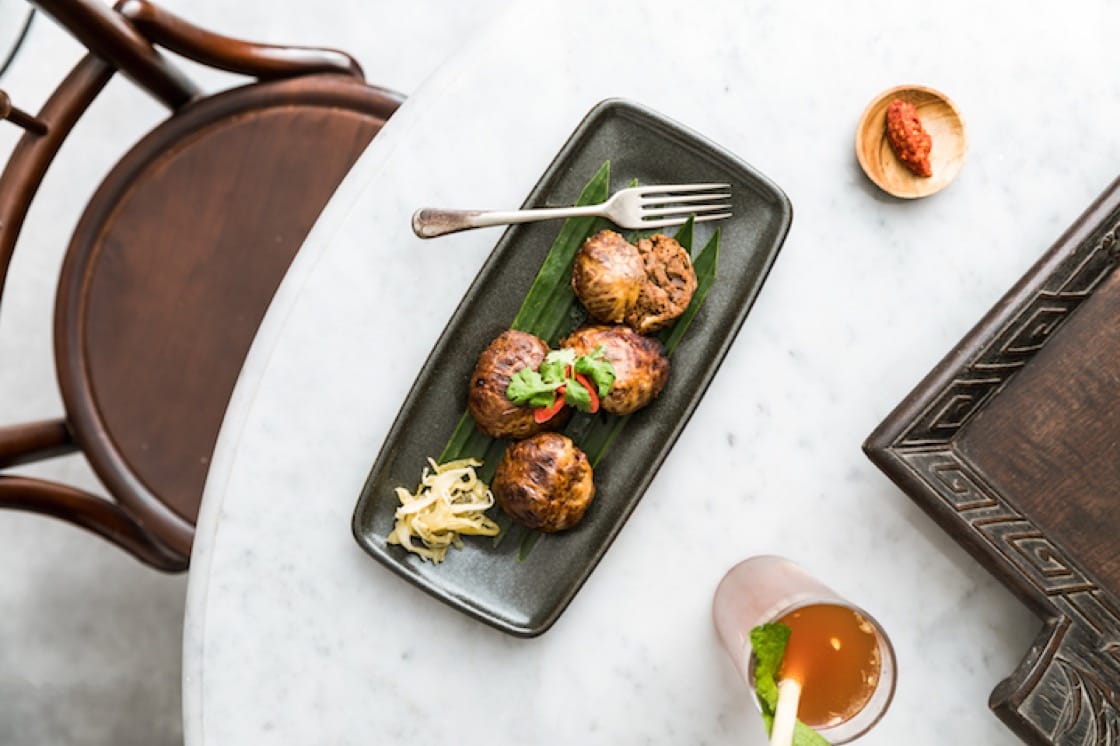Unfortunately today, we hardly have the time nor the patience to prepare the food that our pre-war ancestors laboured on a daily basis. Progress, although important for a growing nation, also kills the cultural aspect, especially when things move too fast. Singapore heritage cuisine is a myriad of different cultures that evolved. Long before Singapore became a major port, its cuisine was originally from native lands that was brought to our island by labourers, traders and businessmen.
In the beginning, it was the Portuguese who came to South East Asia first, followed by the Dutch and then the British empire. There were also the traders, who, in my opinion, made the greatest of influences to the food that we eat today. The traders came from everywhere and brought not just familiar ingredients but unfamiliar items as well. A good example would be chillies, that is reflected in so many of our heritage dishes today.

Why do I say re-created? Because the original dish could be from a Chinese family, but shared amongst neighbours of different ethnic groups, this dish would take on different flavours with new approaches and tweaks made to the original. A good example is mee siam; all the different ethnicities have their own version and today you probably can find only the Chinese, Malay and Indian versions in hawker centres. The Peranakan and Eurasian versions, sadly, can only be had if you score a precious invitation to someone's home.
Heritage cuisine did not disappear suddenly. More than anything, it slowly and gradually became a victim of progress. Families that once ate together during dinner now do not have the time as work has become more prevalent as Singaporeans chased their dreams. In the 1980s, the last of the street hawkers disappeared altogether from places that they frequented daily.
So, into the hawker centres they all went. In my opinion, it caused more bad than good. Good because, anyone wanting a meal could just walk into any hawker centre and find themselves surrounded by food with unlimited choices. On the other hand, it made availability of food so convenient that most Singaporeans took the easy way out. There were too few families that cooked on a daily basis because time did not permit it. Those that had the luxury of feasting at home were fortunate thanks to an earlier generation.

Home-cooked food also suffered as few families took the time and effort to master the methods and techniques that their forefathers before them executed with familiarity and flair. Recipes that were embedded in minds were lost as generations passed on. There were of course the few that wrote what they thought was perfect without realising that watching the whole procedure, from purchase to preparation and execution, was more important that just the recipe.
As such, heritage dishes are hardly found in homes today because of the lack of knowledge or ingredients are prevalent within each ethnic group. Aberjaw, for instance, an Eurasian dish with Chinese influences, is no longer a dish familiar within the Eurasian community. Then there's Feng, which has it's origins in Goa from a dish called Sarpotel, although the Singaporean version can differ because of the smaller dice of the ingredients. Another dish is Tohay, pronounced "toe hay", made from "Ang Chow" using glutinous rice, wine cake and red yeast rice. Its origin is in Fuzhou, but the Peranakan take on it uses "gragoh" or planktonic shrimps placed in the finished product and kept till the shrimps amalgamates into the mixture. This is then added to fried garlic, shallots and lemongrass and of course pork, that absorbs all the flavours and brings a unique taste and texture to a dish that evolved where one culture shared a recipe and another created a dish from it.

In today’s context, grinding now means putting everything into a heavy-duty blender and pulsating everything into a fine paste (sometimes, you have to do it for awhile, before the chilli seeds are an acceptable size). In the past, heavy grinding was done using a "batu giling", a larger version of the pestle and mortar that grinds everything including the seeds to a fine paste.
The differences are subtle. A less vested cook might question if such detail really makes a difference; trust me, that person probably never tried the real McCoy.












